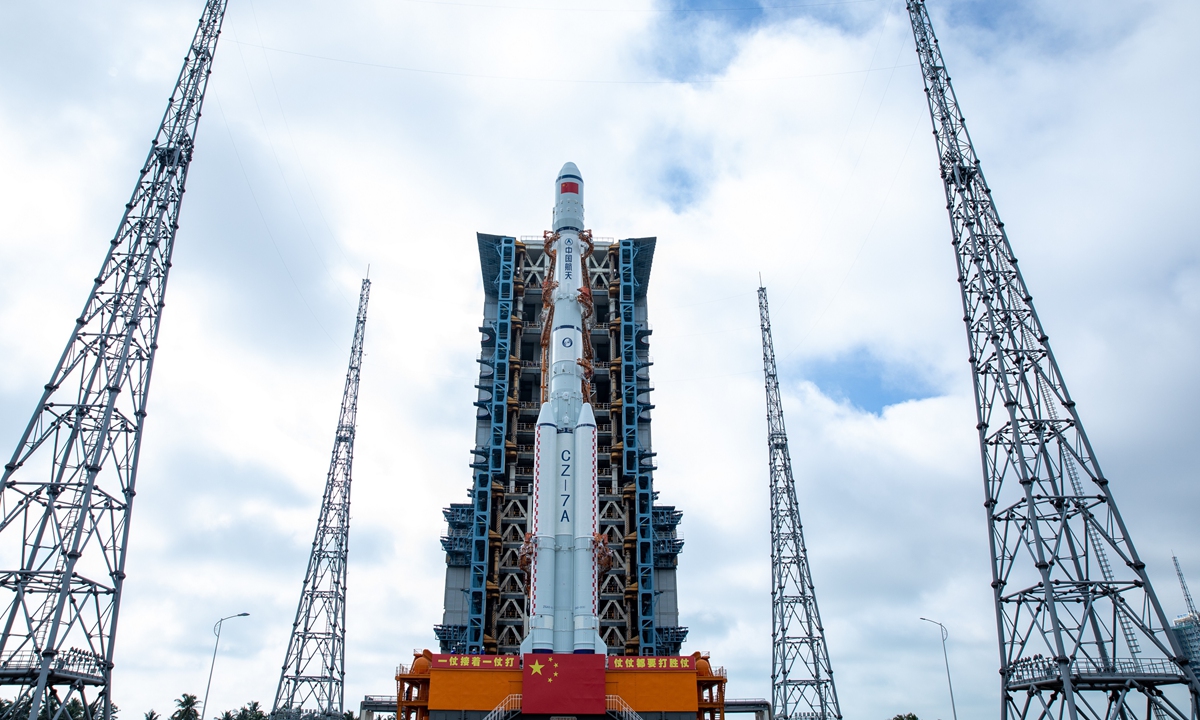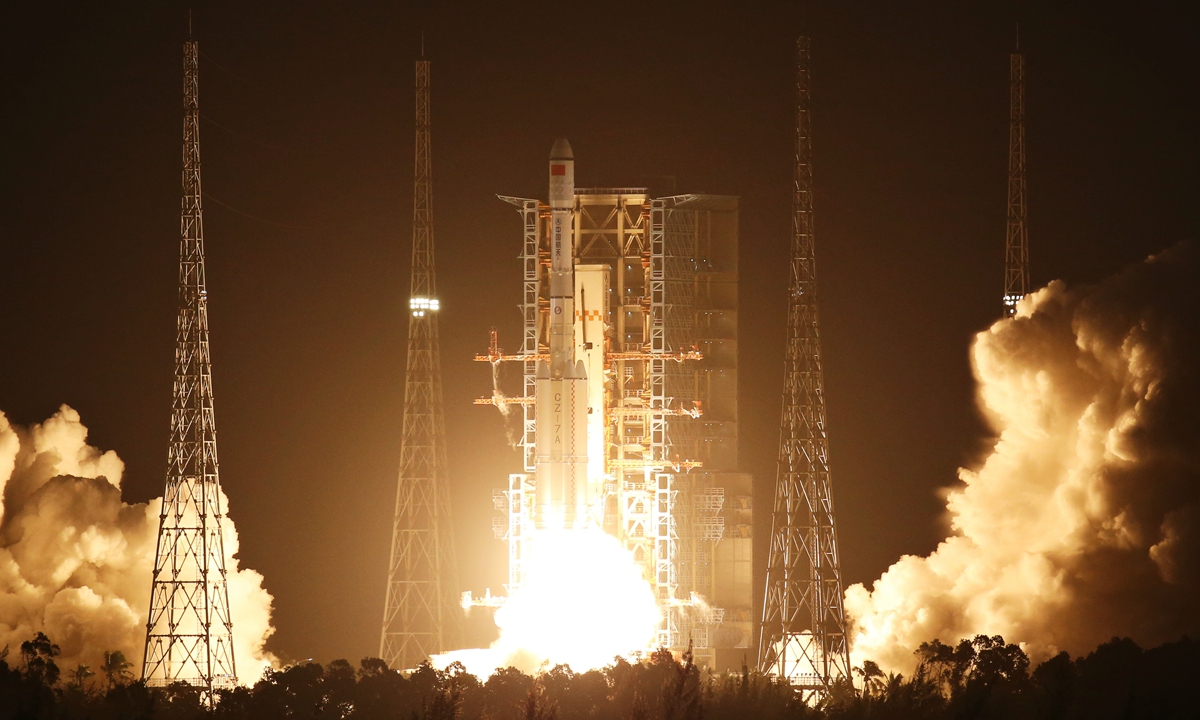Mars landing, space station construction highlights of the busy year
China’s Long March-7A, one of the youngest members of the country’s indigenous Long March rocket family, lifted off at 6:12 pm Thursday from a launch pad some 800 meters from the coastline tropical island of Hainan, adding one more to the super 2021 of China’s aerospace that has witnessed more than 50 orbital launch missions to date.
Weathering the ongoing Typhoon Rai in the South China Sea, the Thursday launch of the Long March-7A Y3 rocket that successfully sent experimental Shiyan-12 01 and 02 satellites into designated orbit marked the finale mission for the Wenchang spaceport in Hainan, according to mission participants at the facility.
Operated and administrated under the Xichang Satellite Launch Center, the Wenchang spaceport scored a perfect 5 for 5 success rate in 2021, which included the groundbreaking launch of China’s Tianhe core space module by the Long March-5B in April, and two flight missions of Tianzhou cargo spacecraft for supply run to Tianhe respectively in May and September.
With the Thursday’s successful launch, Xichang and Wenchang launch centers have executed 20 launch missions within a year, marking it a first in history, said sources with the Wenchang spaceport.
To adapt for the Thursday launch, the length of the rocket body of the Long March-7A rocket Y3 carrier rocket reached 60.7 meters, which according to its developers with the China Academy of Launch Vehicle Technology is the longest rocket in active service.
The development of the Long March-7A, a variant of the Long March-7 that is known as the space freight train for having transported and tasked to deliver cargo spacecraft to China’s space station, fills in a void in the country’s launch capacity to the geosynchronous transfer orbit for payload weighing from 5.5 to 7 tons.

Photo: Li Xin/ Our Space
It is a second successful mission of China’s new generation the medium-sized type this year after a first in March also from the Wenchang Space Launch Center.
It also came following the launch of Tianlian 2 (02) data relay satellite via a Long March 3B carrier rocket from Xichang center on December 13, which the US industry website space.com referred to be the 50th orbital launch of China in 2021.
The 50-plus orbital launches in 2021 have set a new record for China’s aerospace, renewing a previous record of 39 set in 2018 and 2020.
“The brilliant achievements in space China has made this year are not only about having the most successful launches, but also about two historical breakthroughs that amazed the world – the country’s first Mars landing and the space station task series,” Huang Zhicheng, a senior expert on aerospace science and technology, told the Global Times on Thursday.
The Tianwen-1 Mars mission chief designer Zhang Rongqiao was listed by Nature magazine to be among the 10 people who “were at the center of important events in science that have had profound impacts around the world.” According to Nature’s chief features editor, China showcased the world a perfect performance of orbiting, landing, and roving on the Red Planet on its first try.
In addition to deep space exploration, China has laid out its plans to build its own space station in steady steps, with five launches this year that sent two batches of taikonauts to the station, conducting multiple complex tasks including three space walks.
“The intense but high-quality launches throughout the year can be attributed to a number of factors, one being China’s self-research and development capabilities that enabled it to shake off reliance on foreign imports,” Huang said.
He added that the tacit, smooth coordination between astronaut center, control and monitoring system, ground command, launch sites and other systems is another contributing factor to realizing the feat.
What’s more, the spirit of never giving up despite difficulties posed by the ongoing epidemic of all its staff – who have sought not fame, but worked with due diligence — is what made China to stand out on the global stage.

The Long March-7A carrier rocket blasts off from launch pad in Wenchang Space Launch Center in South China’s Hainan Province on December 23, 2021. Photo: Hu Xujie
Wei Dongxu, a space industry analyst who witnessed numerous spacecraft launches in 2021, said he looked forward to the development of larger new-generation launch vehicles for China Space 2022 missions, which would lay grounds for future deep space exploration projects and even crewed ones.
Wei told the Global Times that as the China Space Station is expected to complete construction by the end of 2022, technology to support long-term space for taikonauts would become even more mature, and it would prepare them for future moon landing missions.
Wang Yanan, chief editor of Beijing-based Aerospace Knowledge magazine, added that there already are some countries that have shown interest in cooperating with China to use the space station as a platform for their scientific research projects.
Wang added that China is expected to deliver the world more findings about extraterrestrial bodies with its lunar and Mars rover and its Sun probe in the next year.
Photo: Li Xin/ Our Space

